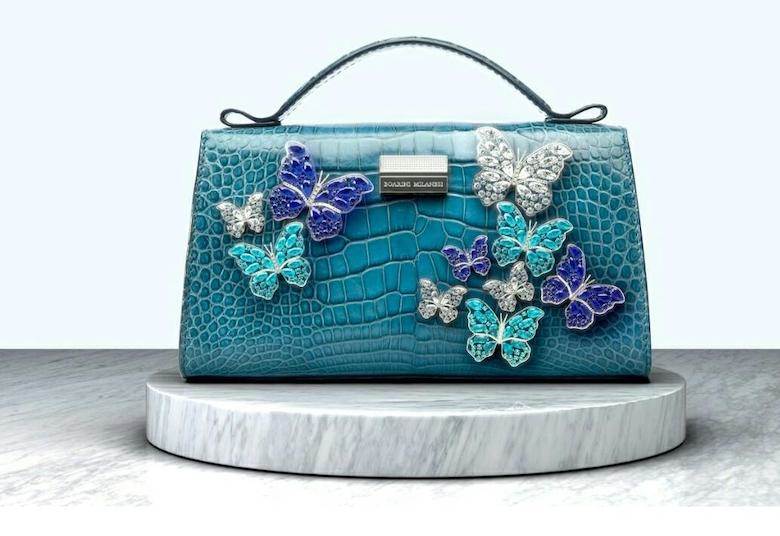The bag that costs €6 million

Everyone knows that, while some business models are based on producing a high volume of low-margin products, others have it the other way round.
As far as handbags are concerned, Bologna-based leathergoods brand Boarini Milanesi is now taking the low-volume, high-margin concept to new levels.
Entrepreneurs Carolina Boarini and Matteo Rodolfo Milanesi made their first handbag, a model called Elegantia, in 2014. They then spent the next two years perfecting every detail before launching their brand.
In September 2018, they opened a showroom in a nineteenth-century palazzo in central Bologna. A new, proprietary workshop followed a few months later allowing Boarini Milanesi to control all aspects of production, with in-house artisans taking charge of everything from leather-cutting to final stitching.
Each bag is made-to-order, entirely by hand, with the owner’s name engraved onto the leather. Ms Boarini and Mr Milanesi quickly set up private, invitation-only showcase events in high-end hotels in London, Monte Carlo, New York and other cities and used these to generate orders.
Prices used to range from €1,950 for the Ninfa Red Carpet model to €50,000 for a crocodile-leather version of the Elegantia. But a new idea has blown this out of the water.
Boarini Milanesi has announced that it now intends to make the most expensive handbag in the world, a version of its Parva Mea model in alligator leather, with ten white-gold butterflies encrusted with diamonds, sapphires and tourmalines for decoration.
It will make only three of these bags, with its artisans devoting 1,000 hours of work to each one. Each one will cost €6 million.
The company has said it will donate €800,000 from each sale to ocean cleaning programmes.
In comments to media about the idea, Carolina Boarini said that raising awareness of the need to protect the oceans of the world was one of the main drivers for the project. She added that the Parva Mea project also emphasised the importance of consuming fewer things and of investing instead in objects that will last for years and retain their value.











